|
User
Reviews 85
Approval 97%
Soundoffs 191
News Articles 14
Band Edits + Tags 6,730
Album Edits 12,191
Album Ratings 15933
Objectivity 73%
Last Active 07-27-22 7:57 am
Joined 12-20-10
Review Comments 858
| The Most Important Japanese Albums
Some of the most important and groundbreaking albums in Japanese music, ranging from oldest to newest. | | 1 | 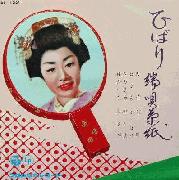 | Hibari Misora
Hibari Hauta Soushi
Hands down one of the most popular celebrities of her time, Misora is one of the best selling artists of all time, with her selling a whopping 80 million records to date. She is also the first woman to win the People's Honour Award, which is given by the Prime Minister of Japan. | | 2 |  | Jacks
Vacant World
Jacks were one of the earliest groups to bring the psychedelic rock style to skyrocketing popularity, mainly in part with their breakthrough 1968 "Vacant World" album. Due to its overwhelming success, Jacks, and that album in particular, are credited with spearheading the early psychedelic movement in Japan. | | 3 |  | Happy End
Kazemachi Roman
Happy End singlehandedly helped pioneer folk music in Japan. Although having initial mediocre success in the mainstream scene, Happy End later went on to receive humongous waves of praise, being called the Japanese Beatles, and even the Japanese Rolling Stone magazine named Happy End's album, "Kazemachi Roman", the greatest Japanese album to date. | | 4 | 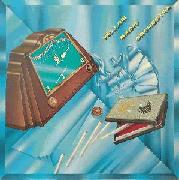 | Yellow Magic Orchestra
Yellow Magic Orchestra
A few years after Happy End's split, member Haruomi Hosono went on to form the groundbreaking electronic trio, Yellow Magic Orchestra. Since forming in 1978, Yellow Magic Orchestra have been acclaimed as pioneers in numerous categories, more significantly with the likes of synthpop and new wave. Their 1978 single, "Firecracker", broke the US and UK charts by 1979, and was the first release from Japan to make such a ruckus since 1961's "Sukiyaki" by Kyu Sakamoto. As a result, YMO's self-titled album broke the US Billboard and R&B charts in 1980. | | 5 | 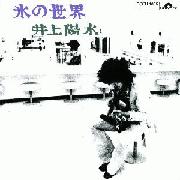 | Yosui Inoue
Kouri no Sekai
Hailed as one of Japan's greatest songwriters of all time, Yosui Inoue's 1973 album "Kouri no Sekai" became one of his highest regarded albums in his catalog, and also became his first album to reach number 1 on the Japanese Oricon charts. This would set a pattern of top-5 albums that would follow him through his 1980 album, "Every Night". | | 6 | 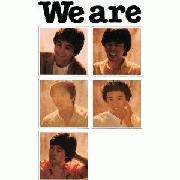 | Off Course
We Are
Along with Happy End, Off Course are also credited with helping skyrocket the folk style to the Japanese masses. Although starting with their 1980 album "We Are", Off Course started to branch much deeper into pop rock. As a result, "We Are" becme Off Course's first chart-topper, and also spawned one of their true signature hits, "Yes-No", which also became their second top 10 single. | | 7 | 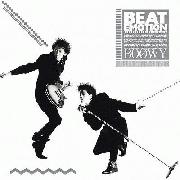 | Boowy
Beat Emotion
Arguably among the most groundbreaking bands in Japanese music history, Boowy helped lay the foundation for dozens-upon-dozens of bands throughout the years. Although initially ignored in their early years, Boowy's 1986 album "Beat Emotion" became their first chart-topping release, and is widely regarded as one of the most classic albums Japan has to offer. Just as recent as 2012, two decades after their initial disbandment, a poll showed that Boowy remains the band that the Japanese majority would like most to see reunite. | | 8 | 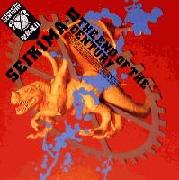 | Seikima-II
End of the Century
One of the earliest heavy metal bands to garner critical attention in Japan, Seikima-II also gained quite a bit of controversy, due to their satanic themes. Nonetheless, Seikima-II went on to be Japanese heavy metal pioneers, and while "End of the Century" is only their second album, it also is their highest-ranking full length album, as it reached number 5 on the Japanese Oricon charts. | | 9 | 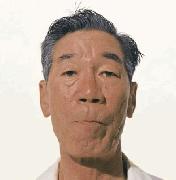 | Unicorn (JPN)
Hattori
Initially a straightforward new wave-inspired band, Unicorn's 1989 album, "Hattori", showed huge growth and maturity on their end, and became their first top-5 album. One of the singles on the album, "Daimeiwaku", remains one of their staple songs today, and Unicorn remain one of the most influential and groundbreaking bands to emerge from the late 80's rock scene. | | 10 |  | The Blue Hearts
Bust Waste Hip
Often called the godfathers of Japanese punk, their 1990 album, "Bust Waste Hip", not only became their first chart-topping album, but has also went platinum, becoming one of the earliest and few Japanese punk albums to do so. Their "Bust Waste Hip" album later went on to become the seventh best-selling album of 1990, and The Blue Hearts still remain one of Japan's most respected bands, two decades after their split. | | 11 | 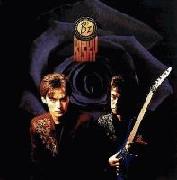 | B'z
Risky
On "Risky", future Japanese rock giants B'z were first starting to concoct their addictive blend of pop and hard rock. Releasing two full length albums that year (with "Risky" going on to sell over a million copies by itself), 1990 proved to be the first year of total future B'z domination. | | 12 | 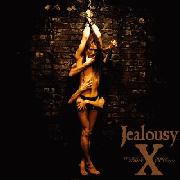 | X Japan
Jealousy
Like Seikima-II, X Japan are also considered to be true heavy metal visionaries in Japan. Known around the world, "Jealousy" was a definite turning stone in X Japan's sound, as it zoomed in on their softer, more progressive-esqued tracks, and distancing themselves from their earlier, heavier style. This can be seen on the "Say Anything" track in particular. As a result, "Jealousy" became their second million-selling album, and their first to top the Oricon charts. Since then, X Japan have officially positioned themselves as true heavy metal pioneers among the Japanese industry. | | 13 |  | Chage and Aska
Tree
Although the duo have had some varying success up to this point, "Tree" was the definite album that solidified Chage and Aska a solid position in the Japanese mainstream conscious. Catapulted with the tremendous smash, "Say Yes", Chage and Aska's 1991 album proved to be a true classic in nearly all aspects, and is now widely considered to be an utmost masterpiece. | | 14 |  | Dreams Come True
The Swinging Star
Fronted by the smash hits "Kessen wa Kinyoubi" and "Haretaraii ne", Dreams Come True's 1992 album became one of the biggest hits of the decade. Selling over 3 million copies, the album definitely certified Dreams Come True as being one of the most significant groups to surface out of Japan in the last 20 years. | | 15 |  | Mr.Children
Atomic Heart
Since 1994's "Atomic Heart" album, Mr.Children has synonymously been associated as the undisputed kings of pop rock in Japan. Containing some of their most iconic songs like "Cross Road" and "Innocent World", "Atomic Heart" was undoubtedly the album that helped carve and manipulate Mr.Children into the rock icons they are today. | | 16 |  | Globe
Globe
Exploding onto the scene in 1995, Globe quickly became one of the biggest names in the 90's Japanese music industry. Globe's 1996 self-titled album contained four multi-platinum singles, and one million-selling single, "Departures". The album itself sold an incredible total of 4 million copies itself, and helped set up an impressive string of chart-topping albums, with it eventually ceasing with 2001's "Outernet", which reached number 9 on the Oricon charts. | | 17 |  | Luna Sea
Style
Although the group already had major success prior, "Style" was arguably the album that officially established the group as some of the most talented artists in the Japanese rock world. Officially distancing themselves from the gothic-like tone to their earlier sound, "Style" in particular shines on songs like "In Silence" and "Desire", and later became Luna Sea's first album to reach number 1 on the Oricon charts. | | 18 |  | Namie Amuro
Sweet 19 Blues
Although she technically made her solo debut with 1995's "Dance Tracks Vol. 1", it still contained songs written for her original group, Super Monkey's. In 1996, Namie Amuro made her true solo debut with "Sweet 19 Blues", which is full of interesting combinations of electropop and mid-90's R&B. The album was also a huge commercial smash, selling over 3 million copies, and solidifying Namie Amuro as one of the biggest names in Japanese pop history. | | 19 |  | Judy and Mary
The Power Source
"The Power Source" was without a doubt the album that broke Judy and Mary to the masses. With a natural sense of blending noisy, art-punk elements with numerous pop overtones, it was only sensable that Judy and Mary would eventually climb to the top of the industry. And thanks to the crossover success that their 1996 single, "Sobakasu", experienced, Judy and Mary did just that, bludgeoning the Japanese mainstream senselessly for the next six years with their cutesy, yet at times artsy and experimental, dynamic pop style. | | 20 |  | Chara
Junior Sweet
Although she was already a somewhat well known pop star, Chara's 1997 album, "Junior Sweet", fully projected the singer onto the mainstream frontlines. With her whispered vocal style layered ontop of numerous whimsical and dreamy songs, "Junior Sweet" sold over a million copies, and became one of Chara's most well known works to date. Not only is "Junior Sweet" one of Chara's most well known works, but it is also undoubtedly one of the most solid and unique albums to explode onto the 1990's Japanese mainstream. | | 21 |  | Glay
Pure Soul
Propelled by the monstrous compilation album "Review" (which sold a truly amazing total of 5 million copies), it only seemed natural that Glay's 1998 album, "Pure Soul", was destined to be a smash. That prophecy obviously came true, and the album has become one of Glay's most best-selling original albums, selling over 2 million copies to date. Needless to say, thanks to "Pure Soul", Glay were officially etched into the top of the Japanese entertainment industry, which they still remain seated in today. | | 22 | 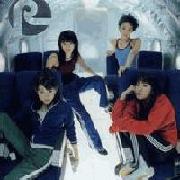 | Speed
Rise
Formed in 1996, it would only take Okinawan-born Speed one year to completely conquer the Japanese mainstream with their addictive urban-laced dance-pop style. Releasing their debut album, "Starting Over", in 1997, the album went on to sell over 2 million copies. However, their biggest success was "Rise", which outsold even their debut album, with "Rise" going on to sell over 3 million copies. The album also contained one of their most recognized singles, "White Love", which sold over 2 million copies itself. With "Rise", Speed became one of the most memorable pop acts of their decade. | | 23 | 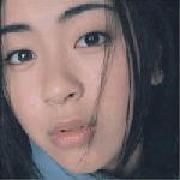 | Utada Hikaru
First Love
Releasing her debut album, "First Love", in 1999, 16 year old Utada Hikaru made Japanese music history when her album sold an astonishing total of 8 million copies. To date, "First Love" is the highest-selling album throughout all of Asia, and it's not a stretch to say that young Utada was the most influential figure in 90's Japanese R&B. | | 24 | 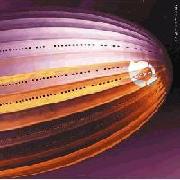 | L'arc-en-Ciel
Ark
In 1999, rock giants L'arc-en-Ciel released one of their most popular albums to date, "Ark". Having an extremely unique sound that blends alternative, progressive, pop and even gothic rock, "Ark" became L'arc-en-Ciel's first album to sell over two million copies, and officially made the group Japanese rock icons. | | 25 |  | Ayumi Hamasaki
Loveppears
Making her initial debut in 1995 as a rapper under the name of Ayumi, she was later reborn in 1999 as mega-idol, Ayumi Hamasaki. She made her debut in early 1999 with "A Song for XX", which went on to sell over a million copies. With her follow-up album, "Loveppears", Hamasaki continues her voyage for complete pop domination, and "Loveppears" even contains Hamasaki's first million-selling single, "Boys & Girls". Since then, Ayumi Hamasaki went on to become the third best-selling artist in Japanese music history, and is also the best-selling female artist of all time in Japan as well. | | 26 | 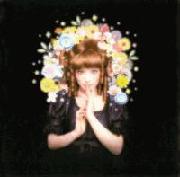 | Shiina Ringo
Shouso Strip
Exploding into the Japanese mass media as an artist like no one else at the time, Shiina Ringo's "Shouso Strip" was, in particularly, a radical release for its time. Containing classics like "Honnou" and "Gibusu", "Shouso Strip" easily stuck out in the Japanese mainstream scene, especially with the amount of idol pop out at the time. Its unique sound helped give Shiina Ringo a huge cult following nationwide, and "Shouso Strip" has sold over 2 million copies to date. | | 27 | 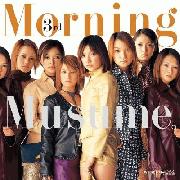 | Morning Musume
3rd Love Paradise
Shot into the top of the charts with the huge success of "Love Machine", the success of Morning Musume's third full length album, "3rd Love Paradise", was overwhelming to say the least. Selling over a million copies, multimember Japanese female idol groups haven't seen sales like that since the days of Onyanko Club, whom are credited to have started the mega Japanese girl group concept. The success of 3rd Love Paradise singlehandedly helped pave the way for numerous other huge girl groups to surface in recent years, with the more popular ones being AKB48 and Momoiro Clover Z. | | 28 |  | Whiteberry
Hatsu
Formed in 1994, young Whiteberry eventually became the postergirls of a theme called "bandol", which consisted of adorable girls playing in a rock band. In 2000, Whiteberry released their most well known single, "Natsu Matsuri", which was a cover of a Jitterin' Jinn song. Whiteberry are one of the most remembered examples of a "bandol", and are also one of the oldest ones as well. | | 29 |  | Miyuki Nakajima
Tanpenshuu
Facing a slow decrease in sales during the 1990's, Japanese music icon Miyuki Nakajima returned strong than ever in 2000 with the release of "Chijou no Hoshi", which is probably her most popular single to date. Featured on the Project X television series, "Chijou no Hoshi" remained on the Oricon charts for a groundbreaking total of two years, and appeared one last time on the Oricon in 2003 at the top spot, after a highly publicized appearance on the Japanese New Year's special, Kouhaku Uta Gassen. Needless to say, Nakajima's "Tanpenshuu" album is extraordinary, and is one of her best and critically acclaimed works to date. | | 30 | 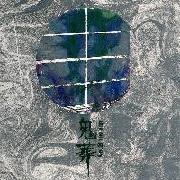 | Dir en Grey
Kisou
In an era of idol groups and numerous pop-rap bands taking over the Japanese Oricon, Dir en Grey are, in particular, louder than ever. With the release of 2002's "Kisou", Dir en Grey quickly matured and further channeled their seemingly endless influences. It shot to number 3, and Dir en Grey then became the posterboys for neo-visual kei, inspiring an array of visual heavy metal artists who would later become quite prevalent, including The Gazette, Mucc and Kagerou. Nowadays, Dir en Grey abandoned much of their pop-inspired elements as demonstrated on "Kisou", in exchange for a much darker, progressive-death metal hybrid that won them huge waves of international acclaim. | |
BMDrummer
01.14.15 | what about boredoms | VinVal
01.14.15 | WHERES ENVY?? | Avagantamos
01.14.15 | boris? | discovolante
01.14.15 | I'm talking about on a major scale, and as far as I know, Boredoms, Envy and Boris haven't really gotten that kind of attention. Critically yeah, commercially no. | Crymsonblaze
01.14.15 | where is pinkerton? | Tunaboy45
01.14.15 | ask treeqt | pedro70512
01.14.15 | Huh...never heard of most of these. Thanks for the lesson. | discovolante
01.14.15 | Sure lol. | Veldin
01.15.15 | Boredoms - Vision Creation Newsun
mah favorite. | ZombicidalMan
01.15.15 | how about number girl | discovolante
01.15.15 | Boredoms are idols to me, but I don't know, I just don't think they made a huge splash on the mainstream scene. But are they underground icons? Absolutely. And ZombicidalMan, it's interesting you say that, because I was on the verge of adding them. But they just missed the cut. | Davil667
01.15.15 | List needs Hide, Maximum the Hormone, DAI and The Back Horn. | Davil667
01.15.15 | Cool list though. | AngryNeighbor
01.15.15 | The Gerogerigegege where? | Jasdevi087
01.16.15 | Cool list. But Number Girl, Maximum the Hormone, BUCK-TICK and Plastic Tree are pretty big too aren't they? | Torontonian
01.16.15 | excellent list | discovolante
01.20.15 | Davil: It's interesting you mentioned hide. Although I was gonna put hide on here, I figured X already covered him. Jas: As I already talked about Number Girl, MtH are actually close runner ups to being on the list. But since I haven't quite seen their influence sink in as of yet, they just missed the cut. Also, Plastic Tree and Buck Tick's Japanese fame dimmed significantly in recent years, and are mainly known overseas nowadays. | Greyvy
01.20.15 | I love judy and mary and the power source is one of my favorite albums :)))) | BlueW
01.20.15 | I have 3 it is indeed stellar, bookmarked | discovolante
01.21.15 | Greyvy: All of JAM is solid, IMO lol. And BlueW, thanks man! | Jasdevi087
01.21.15 | tbh Style is one of Luna Sea's weakest, despite being as successful as it is and having some real bangers. | discovolante
01.22.15 | Mehh honestly, I felt critically that way too. But it still kinda broke the ground for the bandmates to shine as true songwriters, and it was "Style" that initially broke away from the visual kei mold. | iamamanfromspace
02.05.15 | big into Japanese music but don't listen any of these artists ahaha | iamamanfromspace
02.05.15 | List just seems like stuff that is mainstream but also recognised as good... just from what I can tell, I dunno. You should make a list of stuff that's considered the most classic in their respective scenes rather than in the mainstream, maybe | RadicalEd
02.05.15 | hiromi uehara? | MGMTBoys
06.16.15 | Disco, idunno if loveppears was as good as ayu's first. Though personally I've never really been able to get into anything of hers save for the song from your letter. | Angelboros
06.16.15 | Not to point out the obvious, but Gackt's nowhere to be found here. | CalculatingInfinity
06.16.15 | @Soccer: I'd say rarely lists get featured by their quality, but in an ideal world this would have definately been featured.
@Angel: Yep it's odd that Gackt's not here, especally since Disco loves him. He's pretty much the biggest name in Japanese Rock, even people that do not listen to Japanese Music have heard and listened to Gackt at least once.
| CalculatingInfinity
06.16.15 | Plus as far as I'm aware his popularity has remained relatively constant in Japan. | IhateMana
06.16.15 | At least there's no Moi Dix Moix here | IhateMana
06.16.15 | WHERE THE FUCK IS THE ONKYO PISCOVOLASSTE?!!!111 | AnimalsAsSummit
07.04.17 | no fishmans, no list |
|
